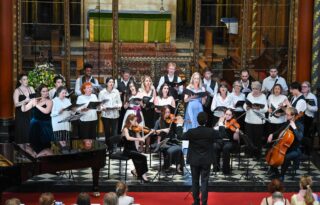LOS ANGELES — All of the University of Southern California (USC) Shoah Foundation’s educational resources about the Armenian Genocide can now be found on the IWitness website that launched on April 17, one week before the 102nd anniversary of the Armenian Genocide.
On the new IWitness Armenia page, educators can find 36 clips of testimony from USC Shoah Foundation’s Armenian Genocide collection, including survivors and witnesses. The clips cover the topics “Forced Marches,” “Adana & Hamidian Massacres,” “Forced Conversion,” “Resistance,” “Rescuers/Aid,” and “Genocide Denial and Memory.”
There is also a section for Armenian Genocide-related activities. Currently this includes the Information Quests “The Armenian Genocide,” “I Am Somebody: Identity and the Armenian Genocide” and “Women You Should Know: Aurora Mardiganian.”
The IWitness Armenia page also features a selection of AGBU WebTalks, an online video series from the Armenian General Benevolent Union (AGBU) that captures and preserves the insights and passion of engaging, inspiring, dynamic thinkers from around the world, speaking on a wide range of Armenian topics. The videos include historical analysis by scholars Raymond Kevorkian and Geoffrey Robinson, the Armenian folk trio Zulal, and journalists Laure Marchand and Guillaume Perrier.
Finally, the page includes a teacher’s guide for teaching with testimony and Connections Videos for students that can help guide teachers and students as they use the clips and activities in the classroom.
In 2010, the Armenian Film Foundation and USC Shoah Foundation signed an historic agreement to digitize, index and preserve J. Michael Hagopian’s collection of interviews with survivors and witnesses to the Armenian Genocide.








